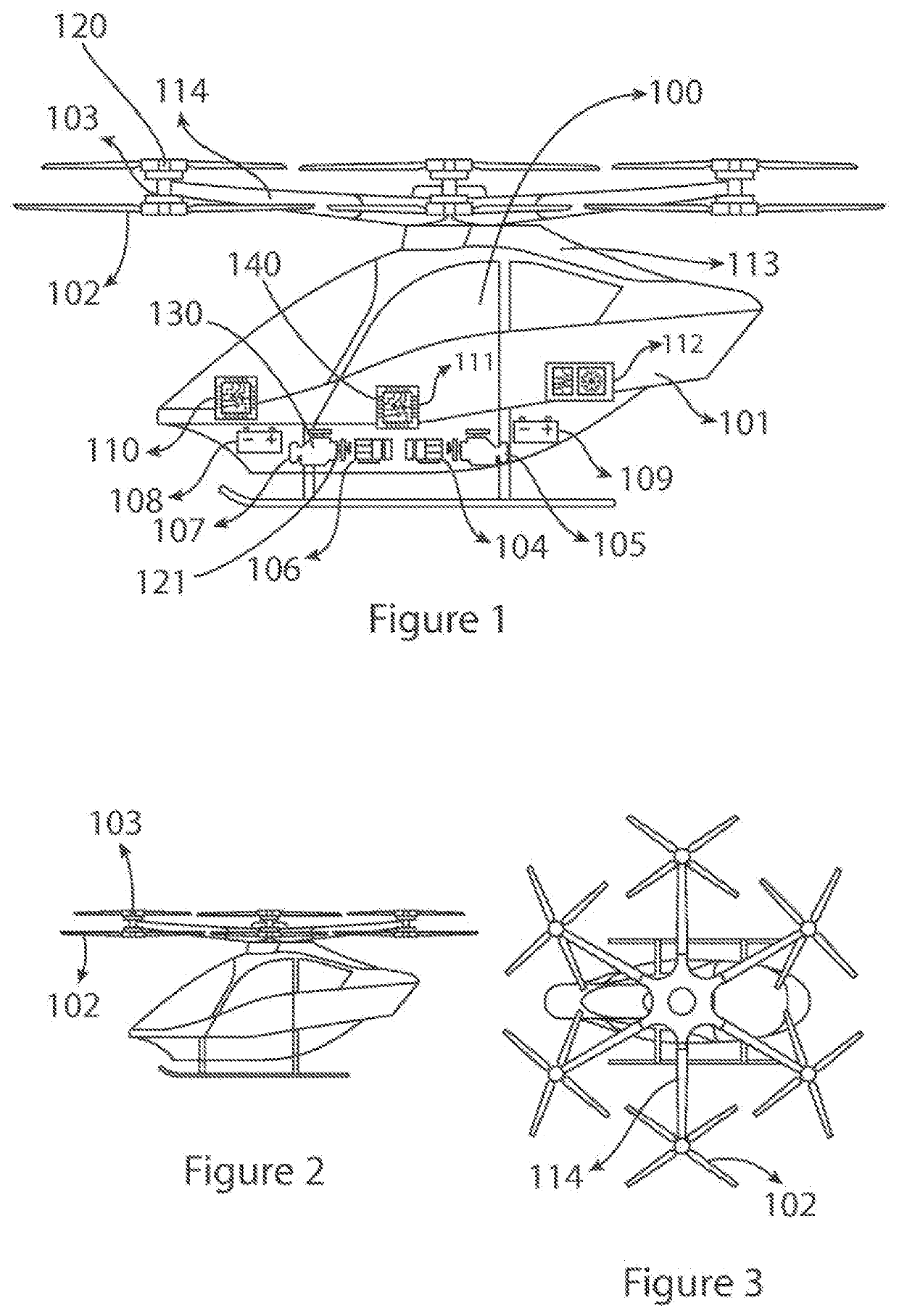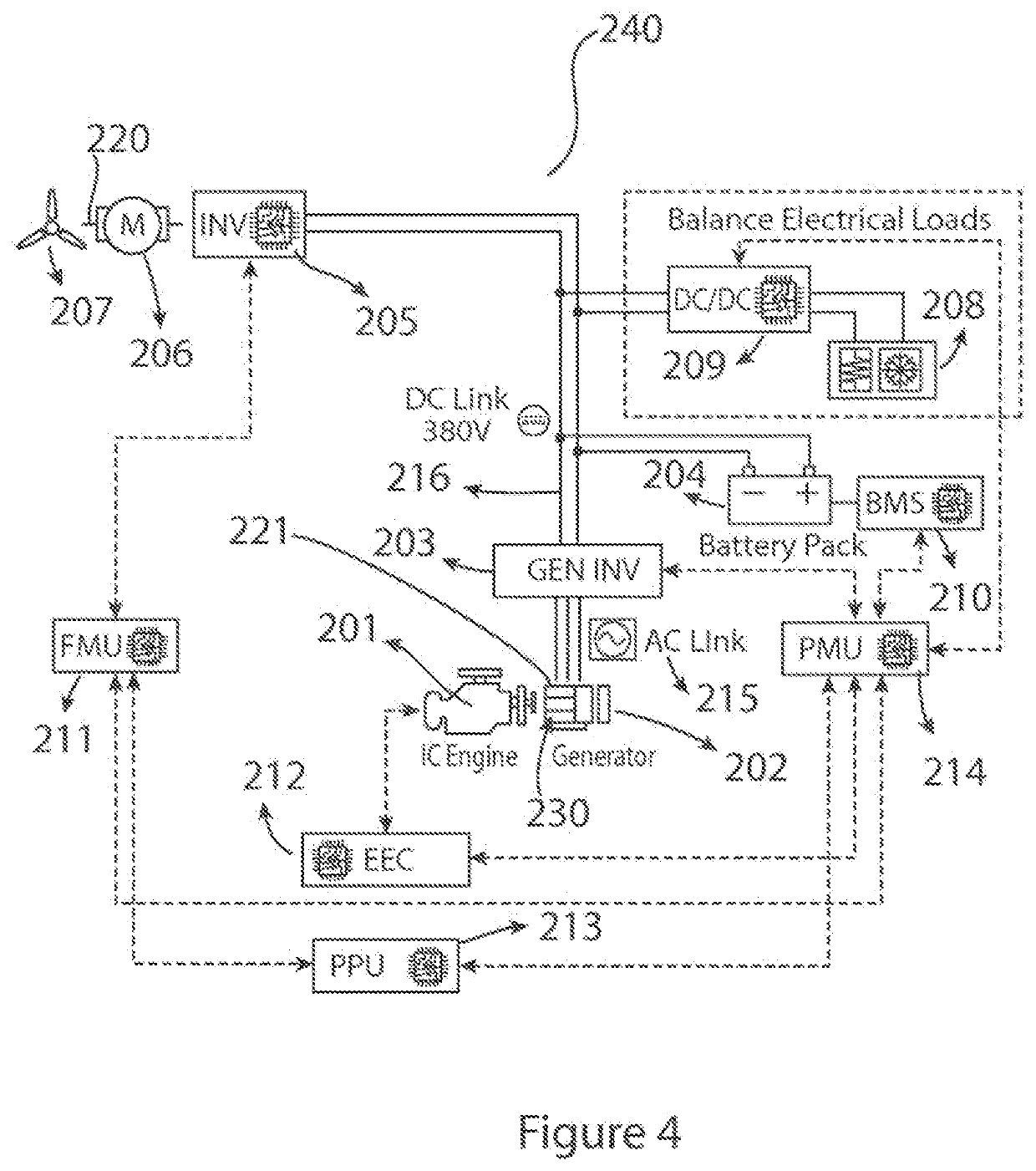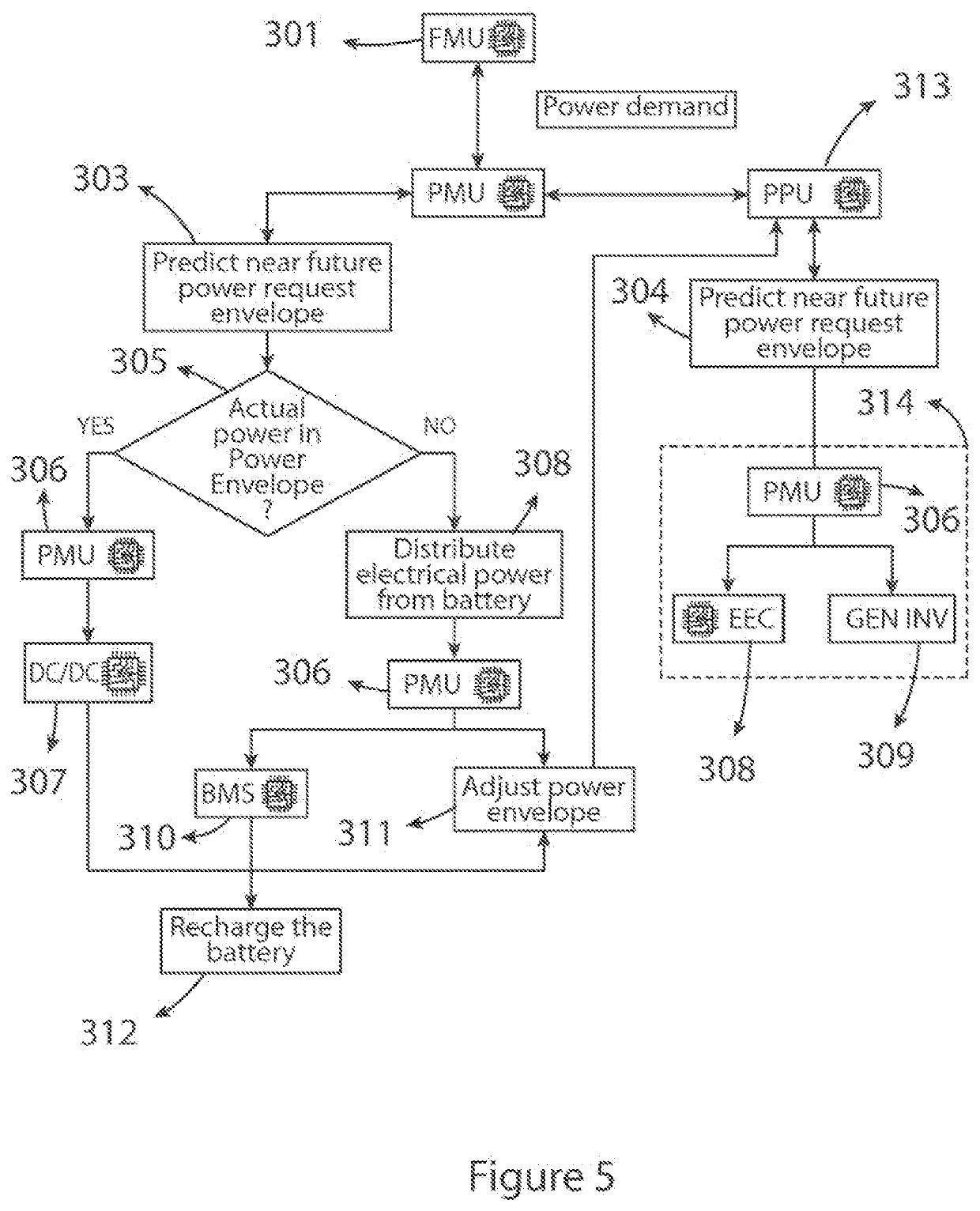A propulsion system for a multirotor aircraft
a multi-rotor aircraft and propulsion system technology, applied in the direction of vertical landing/take-off aircraft, sustainable transportation, transportation and packaging, etc., can solve the problems of reduced payload capacity, reduced flight time, and reduced electrical energy, so as to increase the performance of the system and reduce the fuel consumption
- Summary
- Abstract
- Description
- Claims
- Application Information
AI Technical Summary
Benefits of technology
Problems solved by technology
Method used
Image
Examples
Embodiment Construction
[0054]Referring now to FIG. 1 of the drawings there is shown, generally indicated as 100 a multirotor aircraft. The multirotor aircraft 100 includes a propulsion system 130 embodying a first aspect of the invention. The aircraft comprises a fuselage 101, the propulsion system 130 which comprises one or more propulsion assemblies 120 for providing thrust to the multirotor aircraft 100. The propulsion assemblies 120 are typically coupled to the multirotor aircraft through a plurality of arms 114. Preferably the multirotor aircraft 100 comprises a plurality of propulsion assemblies 120. In a preferred embodiment, as shown in FIGS. 1 to 3, the multirotor aircraft comprises six arms 114 with each arm comprising two propulsion assemblies 120, this can be seen further in FIGS. 2 and 3. However it should be understood that in alternative embodiments (not shown) each arm 114 may include only one propulsion assembly 120 or more than two propulsion assemblies 120 and if further arms 114 are pr...
PUM
 Login to View More
Login to View More Abstract
Description
Claims
Application Information
 Login to View More
Login to View More - R&D
- Intellectual Property
- Life Sciences
- Materials
- Tech Scout
- Unparalleled Data Quality
- Higher Quality Content
- 60% Fewer Hallucinations
Browse by: Latest US Patents, China's latest patents, Technical Efficacy Thesaurus, Application Domain, Technology Topic, Popular Technical Reports.
© 2025 PatSnap. All rights reserved.Legal|Privacy policy|Modern Slavery Act Transparency Statement|Sitemap|About US| Contact US: help@patsnap.com



